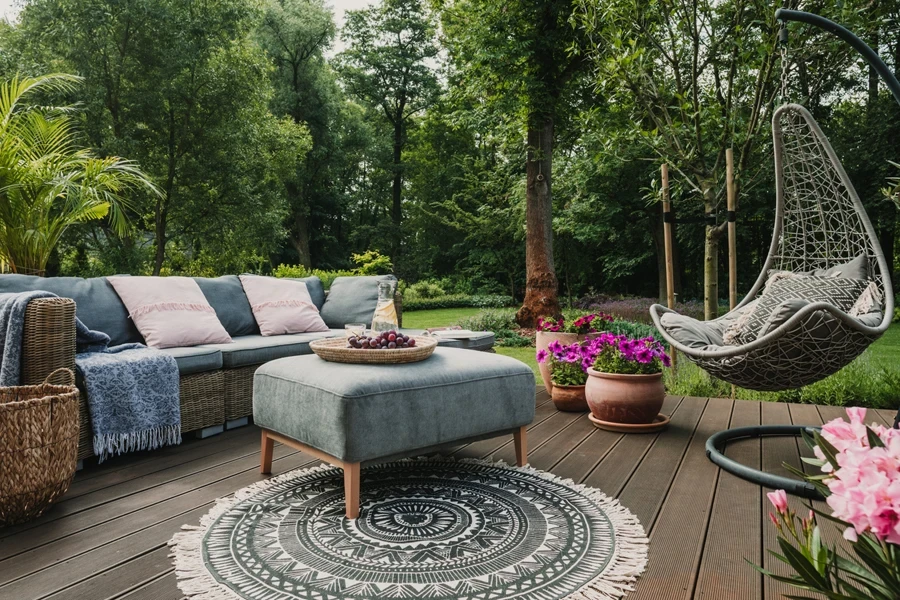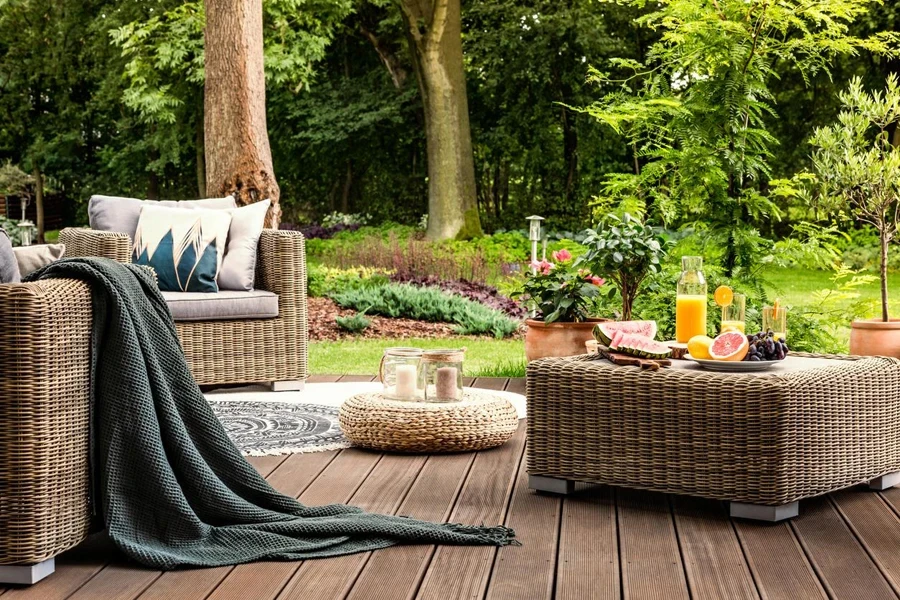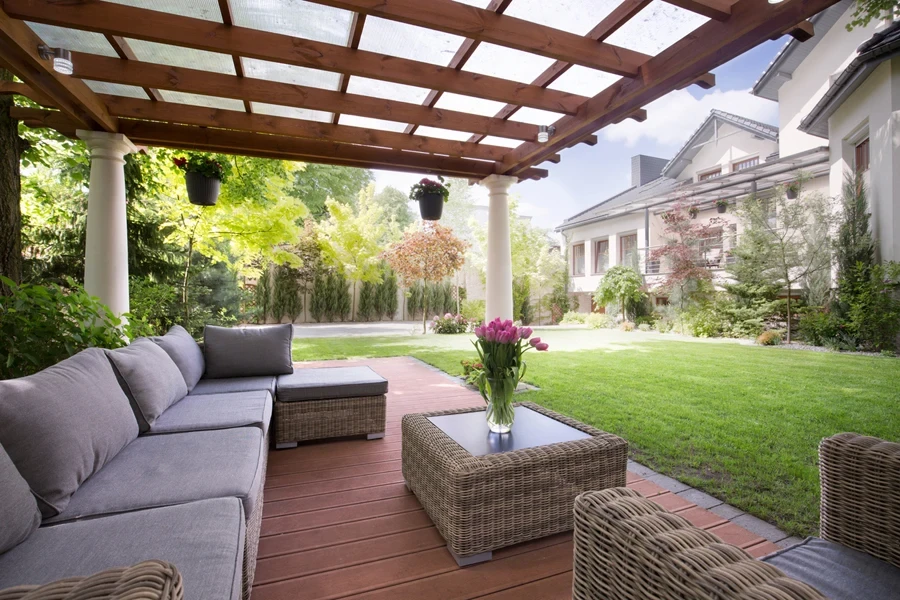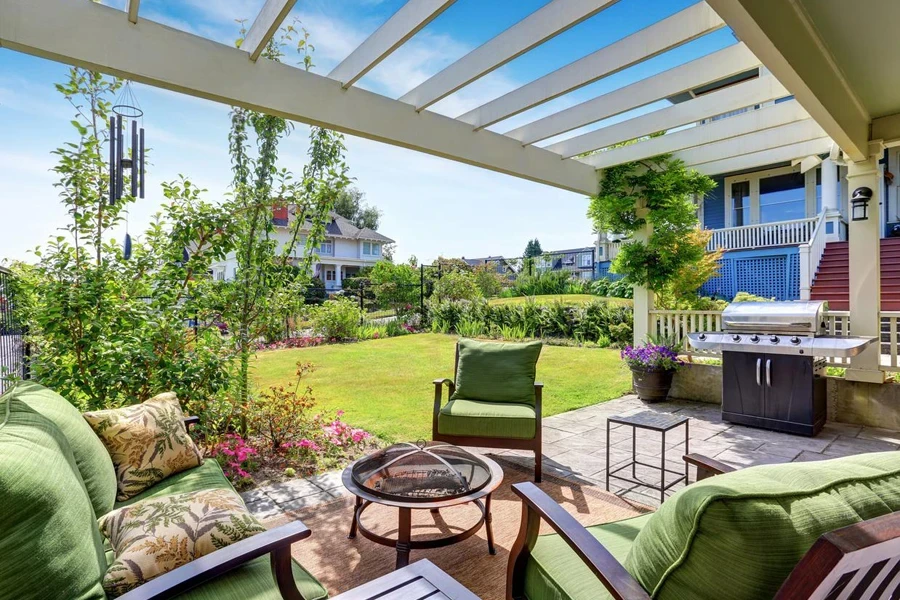Table of Contents
1. Introduction
2. Exploring the Main Types of Garden Rooms
3. Key Market Trends for Garden Rooms in 2025
4. Important Factors to Consider Before Selecting a Garden Room
5. Top Garden Room Models and Their Features
6. Conclusion
Introduction
Garden rooms have quickly become essential additions to modern spaces, offering flexibility and practicality in 2025. These standalone structures serve various purposes, from creating quiet home offices to being personal gyms, art studios, or relaxation areas. By providing additional square footage without the need for extensive home renovations, they cater to diverse needs while seamlessly blending with outdoor environments. Their ability to be customized, insulated for year-round comfort, and tailored to specific uses makes garden rooms an attractive option for both residential and commercial settings, enhancing property value and usability.
Exploring the main types of garden rooms
Garden rooms have gained significant popularity as versatile spaces that cater to a variety of functions. These adaptable structures can be designed to meet the specific needs of users, ranging from quiet work environments to creative studios and wellness areas. Below are the key types of garden rooms and their common uses.

Home office spaces
With remote working on the rise, garden rooms are frequently being utilized as home office spaces. These dedicated work areas provide a focused environment, free from the distractions of the home. Garden offices offer the added benefit of creating a physical separation between personal and professional life, fostering greater productivity. The customizability of these spaces allows for integration of ergonomic furniture, natural light optimization, and personalized décor, making them ideal for long-term use. Additionally, many garden offices are equipped with insulation and energy-efficient heating to ensure comfort throughout the year.
Garden studios and workshops
Creative professionals and hobbyists often use garden rooms as studios or workshops. These spaces are ideal for those who need ample room for materials, tools, or equipment, whether for painting, crafting, or other hands-on activities. With options for enhanced natural lighting, soundproofing, and organizational zoning, garden studios are designed to provide an inspiring yet functional space. Some designs even incorporate features like outdoor terraces, which help blend the studio with the surrounding environment, adding to the creative atmosphere.
Leisure and wellness rooms
Garden rooms are also increasingly being transformed into personal wellness spaces. Home gyms, yoga studios, and meditation rooms are just some of the popular uses. These private wellness areas allow individuals to exercise or relax without the need for travel to a public facility. Customizable features, such as temperature control, sound systems, and workout equipment, help to create an ideal environment for physical activity. Many of these spaces are designed with large windows or bifold doors to allow natural light and fresh air, enhancing the overall wellness experience.

Multifunctional spaces
One of the key advantages of garden rooms is their ability to serve multiple functions. Many garden rooms are designed to be flexible, offering layouts that can easily adapt to different needs. For example, a garden room can function as an office during the day and transform into a leisure space in the evening. This flexibility makes them a highly practical choice for those seeking to maximize the utility of their space. Some rooms even incorporate moveable partitions or modular furniture to facilitate quick transitions between uses, whether it’s hosting guests or enjoying personal time.
Key market trends for garden rooms in 2025
Garden rooms have evolved into multifunctional spaces that offer comfort, sustainability, and personalization. These trends reflect the growing desire for year-round usability, eco-conscious construction, and designs that align with modern lifestyles.
The garden rooms market, estimated at USD 1.3 billion, is forecasted to grow to USD 2.1 billion by 2030, with an annual growth rate of 6.9%, driven by rising demand for multifunctional outdoor spaces suitable for work, wellness, and leisure, according to MarkWide Research.
Demand for year-round usability
As garden rooms transition from seasonal spaces to year-round living areas, insulation and climate control have become essential features. High-performance insulation, such as PIR foam boards, mineral wool, and multi-layered reflective foil, ensures thermal efficiency, keeping garden rooms comfortable in all seasons. Double-glazed windows and doors play a crucial role in maintaining a consistent indoor temperature, preventing heat loss during winter and excessive heat in summer. These advancements allow garden rooms to serve as offices, studios, and leisure spaces without the need for extensive heating or cooling, significantly reducing energy consumption. For year-round usability, it is critical that insulation covers the walls, roof, and even the floor, while ensuring airtight construction for maximum efficiency.

Sustainable and eco-friendly designs
Sustainability is a driving factor in garden room design in 2025, with increasing emphasis on using environmentally friendly materials. Builders are now prioritizing certified sustainable timber, recycled materials, and energy-efficient solutions such as green roofs and rainwater harvesting systems. For example, many garden rooms now incorporate PEFC or FSC-certified wood, ensuring that materials are sourced responsibly. This shift toward sustainability is not only beneficial for the environment but also meets the growing demand for eco-conscious living. In addition, garden rooms with solar panels or renewable energy systems are becoming more common, enabling spaces that minimize carbon footprints while offering high functionality. The integration of green technologies ensures that these structures remain energy-efficient, promoting long-term sustainability.
Customization and aesthetic appeal
Customization and personalization remain at the forefront of garden room design. The ability to tailor everything from size to internal features has led to the development of highly functional, aesthetically pleasing spaces that blend seamlessly with their surroundings. Panoramic glass panels, natural wood cladding, and biophilic elements—such as indoor plants and green walls—are popular features that create a strong connection between indoor and outdoor environments. Additionally, many garden rooms are designed with multifunctionality in mind, offering flexible layouts that can accommodate various uses, from home offices to wellness spaces. The trend toward minimalistic yet stylish designs ensures that garden rooms not only meet practical needs but also serve as elegant extensions of the home.
Important factors to consider before selecting a garden room
Selecting the right garden room involves weighing several critical factors that ensure comfort, durability, and compliance with local regulations. Below are the key elements to consider when making an informed decision.
Insulation and weather protection
One of the most vital aspects of a garden room is insulation and weatherproofing, especially for year-round usability. Proper insulation keeps the room warm in the winter and cool in the summer, making it a comfortable space regardless of the season. Materials such as PIR foam boards, mineral wool, or reflective foil insulation are popular choices for garden rooms. PIR foam boards are especially effective due to their high thermal resistance and slim profile, providing excellent insulation without taking up much space. Insulation should extend to the walls, roof, and floor to minimize heat loss and maintain energy efficiency. Additionally, airtightness is crucial to preventing drafts and moisture issues, making weatherproofing essential for extending the room’s lifespan and protecting against elements like rain and snow.
Size and layout options
Choosing the right size and layout for a garden room is closely tied to its intended use. Whether it’s being used as a home office, a gym, or a leisure room, the size and layout should optimize functionality without compromising space efficiency. For example, an office garden room may require a smaller, more compact layout, while a home gym or entertainment space might need a larger footprint. Additionally, zoning options allow for flexible uses, where one space can serve multiple purposes. Movable partitions or adjustable furniture can make a garden room adaptable, catering to evolving needs over time.
Material durability and construction
Material choice has a direct impact on the durability and maintenance of a garden room. Common materials include Shiplap+ cladding, timber, and PVCu. Shiplap+ cladding offers excellent durability and resistance to weather, while timber, particularly when sourced sustainably, provides both an eco-friendly and long-lasting solution. PVCu is another popular material known for its weather resistance, low maintenance, and insulating properties. Unlike wood, which can warp or rot over time, PVCu withstands harsh conditions and requires minimal upkeep, making it a highly practical option for windows and doors.

Installation and legal considerations
Before installing a garden room, it is important to verify local legal and zoning requirements, particularly regarding planning permissions. In most cases, garden rooms are covered under “permitted development” rights, meaning planning permission may not be required as long as the structure meets certain criteria, such as staying within height limits and not covering more than 50% of the garden area. However, any features like roof terraces or large windows that impact privacy or neighboring properties may require special permissions. Always check local regulations to avoid legal complications and ensure compliance.
Top garden room models and their features
As garden rooms become more diverse in function and design, selecting the right model involves balancing insulation performance, aesthetic appeal, and cost. Below are some of the top models known for their unique features, catering to different needs and budgets.
High-performance insulated garden rooms
For year-round comfort, high-performance insulated garden rooms are essential. These models typically feature advanced insulation materials such as PIR foam boards, reflective foil insulation, and double-glazed windows, all of which contribute to superior thermal efficiency. One standout model is the EcoQuilt Pro Garden Room, known for its multi-layered insulation system that ensures excellent heat retention during winter and cool air in the summer. This model also integrates airtight construction techniques to reduce drafts, enhancing both energy efficiency and comfort.
Another leading choice is the ThermaPod Studio, which utilizes cavity slab insulation and triple-glazed windows, offering top-notch insulation without compromising on space. This makes it perfect for professionals seeking quiet, year-round use, such as home offices or creative studios. The high insulation rating in these models also ensures significant reductions in heating and cooling costs, an important factor for long-term usage.
Modern, stylish designs for contemporary living
Garden rooms are not only practical but can also be a stylish extension of living spaces. Many models now emphasize sleek, contemporary designs with multifunctionality at their core. The Vista 360 is a prime example, featuring floor-to-ceiling glass panels that provide panoramic views and enhance the connection between indoor and outdoor environments. Its minimalist design is well-suited for modern homes, and the versatile layout can easily adapt to functions such as a yoga studio, home gym, or even a luxury entertainment space.
For those seeking a touch of luxury, the SkyPod Loft offers a cutting-edge design with a retractable roof, making it ideal for stargazing or creating an open-air experience. This model blends aesthetics with functionality, offering both a statement design and flexible usage options. Large bi-fold doors and sustainable timber cladding make it a modern, eco-friendly choice, perfect for anyone looking to combine stylish living with environmental awareness.

Budget-friendly yet durable options
Not all garden rooms come with a hefty price tag, and there are plenty of models that balance affordability with durability. One such option is the EcoSpace Compact, designed for small garden areas without sacrificing on quality. With its cost-effective materials like PVCu for windows and doors, this model is highly resistant to weather conditions and requires minimal maintenance. Its insulation performance, while modest compared to high-end models, is sufficient for seasonal use or for clients looking for an economical solution.
Another excellent budget-friendly model is the Smart Studio, constructed from durable Shiplap+ cladding, known for its weather resistance and low maintenance requirements. Despite its affordability, it includes double-glazed windows and optional insulation upgrades, making it a practical choice for those wanting to maximize value without overspending.
Conclusion
Selecting the right garden room in 2025 hinges on balancing insulation, durability, and customization to meet specific needs. High-quality insulation ensures year-round comfort, while durable materials like Shiplap+ cladding and PVCu offer long-lasting protection against weathering. Customization options allow for the creation of spaces that blend both function and aesthetic appeal, catering to diverse uses such as offices, gyms, and studios. For businesses looking to invest in these structures, finding a garden room that aligns with budget and performance is key to achieving a versatile, comfortable space that will last for years.



